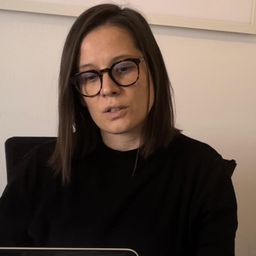From “Kodak Moment” into the pharmaceutical and cosmetic industryor should film photography be a heritage?
My Session Status
What:
Paper
Part of:
When:
4:00 PM, lunes 29 ago 2022
(20 minutos)
Where:
UQAM, pavillon J.-A. De Sève (DS)
- DS-1570
More than one hundred years ago, George Eastman, founder of the Kodak brand, as the result of the invention to capture light on photo sensitive material (celluloid film), created the photographic industry, based on chemical processes – that is called, from today’s perspective, analog or film photography.
The industry of the photographic film allowed us to reach an unexpected level for the use of it. It has allowed us to watch, document, educate and depict ourselves in the field of art, journalism, science and everyday life. It became our cultural and historical memory.
Kodak, one of America’s most valuable brands and giant of photographic film industry, managed to capture the vast majority of the film world market in the 20th century. During its reign, the brand successfully launched several campaigns that instantly became classics, such as the ‘Kodak Moment’ or 'Kodak Girl'. Despite the fact that it was a leading producer in film photography, Kodak was in fact the first brand to create the digital camera in 1975. Although, there were great expectation to continue its success in 21st century with new theology and digital photography, Kodak ended up failing to an outlast inevitable change and filed for Chapter 11 of bankruptcy protection in 2012. A year after, the company emerged from bankruptcy by selling many of its patents and continued under the name of Kodak Alaris. In the period of the global COVID-19 pandemic, there were shocking news in the media: Kodak announced it would begin producing pharmaceutical materials.
In Japan, in the 1930s another giant of photographic film industry was founded, Fujifilm. In the 1960s, the company was already in the race to catch-up to the world photographic film leader Eastman Kodak Co. When Kodak went bankrupt, Fujifilm overcame the industry crisis provoked with digitization, shifting the focus from its traditional business to new areas and one of them being the cosmetic industry. It may seem strange or even odd for a film company to sell cosmetics, but as strange as it may seem, it was discovered that there are a lot of similarities in between analog film manufacturing technology and the cosmetic industry. Learning from Fujifilm’s example, Kodak is planning to create a new business arm called Kodak Pharmaceuticals as a response for COVID-19 crises.
In terms of conference and case studies of Kodak and Fujifilm, this research is trying to find the answer to the question: How does the major multinational industry of the 20th century view itself, faced with “castles of the industry” and at the time of its own demise?
Trying to find the answer to this question, another one is arising: Is film photography recognized as a heritage and if it needs tools of protection? In the transition process from film to digital photography, a phenomenon that started taking place at the end of the 20th century, most of the film photography factories shut down. As a result, production of photo equipment is substantially diminishing and century old tradition of film photography is disappearing from global use. Fujifilm and partly Kodak managed to survive shifting production into other fields, but is that enough to maintain the knowledge and practices of film photography, or should we start the process of safeguarding film photography in different aspects?
The research examines digital archival sources of Kodak and Fujifilm companies, articles published in the online magazines considering this recent topic in the 21st century, as well as the growing phenomenon of the world wild film photography movement which started to appear online after the collapse of the film photography industry in 2012.
